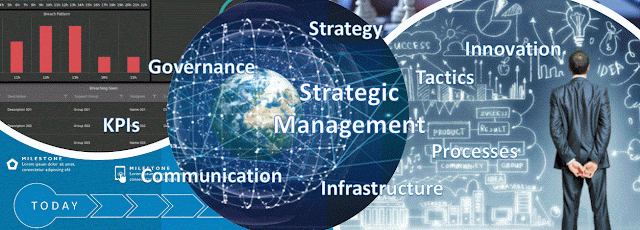
|
|
Prompt Engineering Series |
Prompt: "write a post of 600 words on how AI can be used to predict its evolution"
Introduction
Artificial Intelligence (AI) is evolving at a breathtaking pace, reshaping industries, societies, and even our understanding of intelligence itself. But as AI becomes more complex and autonomous, a fascinating question arises: Can AI be used to predict its own evolution?
The answer is yes - and it’s already happening. By analyzing trends, modeling innovation cycles, and simulating future scenarios, AI is becoming a powerful tool not just for solving problems, but for forecasting its own trajectory.
Learning from the Past to Predict the Future
AI systems excel at pattern recognition. By ingesting historical data on technological breakthroughs, research publications, patent filings, and funding flows, AI can identify the signals that precede major leaps in capability.
For example:
- Natural language models can analyze scientific literature to detect emerging themes in AI research.
- Machine learning algorithms can forecast the rate of improvement in benchmarks like image recognition, language translation, or autonomous navigation.
- Knowledge graphs can map relationships between technologies, institutions, and innovations to anticipate convergence points.
This isn’t just speculation - it’s data-driven foresight.
Modeling Innovation Cycles
AI can also be used to model the dynamics of innovation itself. Techniques like system dynamics, agent-based modeling, and evolutionary algorithms allow researchers to simulate how ideas spread, how technologies mature, and how breakthroughs emerge.
These models can incorporate variables such as:
- Research funding and policy shifts
- Talent migration across institutions
- Hardware and compute availability
- Public sentiment and ethical debates
By adjusting these inputs, AI can generate plausible futures - scenarios that help policymakers, technologists, and ethicists prepare for what’s next.
Predicting Capability Growth
One of the most direct applications is forecasting the growth of AI capabilities. For instance:
- Performance extrapolation: AI can analyze past improvements in model accuracy, speed, and generalization to estimate future milestones.
- Architecture simulation: Generative models can propose new neural network designs and predict their theoretical performance.
- Meta-learning: AI systems can learn how to learn better, accelerating their own development and hinting at the pace of future evolution.
This recursive forecasting - AI predicting AI - is a hallmark of the field’s increasing sophistication.
Challenges and Uncertainties
Despite its promise, predicting AI’s evolution is fraught with uncertainty:
- Emergent behavior: AI systems often behave in unexpected ways, making long-term predictions difficult.
- Black box models: Many AI systems lack interpretability, which limits our ability to understand their reasoning.
- Ethical and societal variables: Human decisions - about regulation, deployment, and trust - can dramatically alter AI’s path.
AI can model probabilities, but it cannot guarantee outcomes. Its predictions must be treated as guidance, not gospel.
Governance and Strategic Planning
Using AI to predict its own evolution isn’t just a technical exercise - it’s a governance imperative. Governments, corporations, and research institutions can use these forecasts to:
- Anticipate risks and disruptions
- Allocate resources strategically
- Design ethical frameworks before crises emerge
- Foster international cooperation on AI safety
By turning prediction into preparation, we shift from reactive to proactive stewardship.
Conclusion: AI as a Mirror and a Map
AI’s ability to predict its own evolution is a profound development. It allows us to peer into the future - not with certainty, but with clarity. It offers a mirror to reflect on our trajectory, and a map to navigate the unknown.
But the ultimate responsibility remains human. AI can forecast its growth, but only we can decide what kind of future we want to build.
Just try the prompt on Copilot or your favorite AI-powered assistant! Have you got a different/similar result? How big or important is the difference? Any other thoughts?
Just share the link to the post with me and I'll add it to this post as a resource!
Disclaimer: The whole text was generated by Copilot (under Windows 11) at the first attempt. This is just an experiment to evaluate feature's ability to answer standard general questions, independently on whether they are correctly or incorrectly posed. Moreover, the answers may reflect hallucinations and other types of inconsistent or incorrect reasoning.












